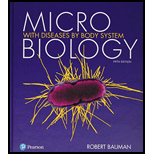
To tell:
Why it is important that the cells forming the blood vessels of the spinal cord and brain should be tight against one another by forming a blood-brain barrier.
Introduction:
The blood vessels in the brain and spinal cord are lined on the inside with specialized endothelial cells. These endothelial cells are stuck together very tightly and forming 'tight junctions'.
Explanation of Solution
The spinal cord extends down from the brain to the lumbar region (lower back). Below lumbar region, a package of nerves called the cauda equina is seen. This bundle of nerves resembles the tail of a horse. The dura mater is a tough fibrous sheath which provides a flexible and strong covering for the delicate organs of the central nervous system (CNS). It acts as a barrier and prevents the spread of infections from the bones. The arachnoid mater is located deep to the dura mater is the arachnoid mater which contains many branching fibers, which gives the appearance of a spider web. The subarachnoid space is the cavities found in between the arachnoid mater fibers. Pia mater is the internal layer, which is pressed near to the spinal cord and brain. Blood vessels situated on the top of the pia mater supplies the central nervous system with blood. These blood vessel walls are composed of tightly packed cells that form the blood-brain barrier, thereby preventing the entry of microbes and other large molecules into the subarachnoid space. So the infections of blood do not spread easily to the CNS.
It is important that the cells that are involved in the formation of the blood vessels of the spinal cord and brain should be tight against with each other, forming a blood-brain barrier to prevent the entry of microbes from blood to subarachnoid space and spread the infection to the CNS.
Want to see more full solutions like this?
Chapter 20 Solutions
Pearson eText Bauman Microbiology with Diseases by Body Systems -- Instant Access (Pearson+)
- What is the structure and function of Eukaryotic cells, including their organelles? How are Eukaryotic cells different than Prokaryotic cells, in terms of evolution which form of the cell might have came first? How do Eukaryotic cells become malignant (cancerous)?arrow_forwardWhat are the roles of DNA and proteins inside of the cell? What are the building blocks or molecular components of the DNA and proteins? How are proteins produced within the cell? What connection is there between DNA, proteins, and the cell cycle? What is the relationship between DNA, proteins, and Cancer?arrow_forwardWhy cells go through various types of cell division and how eukaryotic cells control cell growth through the cell cycle control system?arrow_forward
- In one paragraph show how atoms and they're structure are related to the structure of dna and proteins. Talk about what atoms are. what they're made of, why chemical bonding is important to DNA?arrow_forwardWhat are the structure and properties of atoms and chemical bonds (especially how they relate to DNA and proteins).arrow_forwardThe Sentinel Cell: Nature’s Answer to Cancer?arrow_forward
- Molecular Biology Question You are working to characterize a novel protein in mice. Analysis shows that high levels of the primary transcript that codes for this protein are found in tissue from the brain, muscle, liver, and pancreas. However, an antibody that recognizes the C-terminal portion of the protein indicates that the protein is present in brain, muscle, and liver, but not in the pancreas. What is the most likely explanation for this result?arrow_forwardMolecular Biology Explain/discuss how “slow stop” and “quick/fast stop” mutants wereused to identify different protein involved in DNA replication in E. coli.arrow_forwardMolecular Biology Question A gene that codes for a protein was removed from a eukaryotic cell and inserted into a prokaryotic cell. Although the gene was successfully transcribed and translated, it produced a different protein than it produced in the eukaryotic cell. What is the most likely explanation?arrow_forward
 Medical Terminology for Health Professions, Spira...Health & NutritionISBN:9781305634350Author:Ann Ehrlich, Carol L. Schroeder, Laura Ehrlich, Katrina A. SchroederPublisher:Cengage Learning
Medical Terminology for Health Professions, Spira...Health & NutritionISBN:9781305634350Author:Ann Ehrlich, Carol L. Schroeder, Laura Ehrlich, Katrina A. SchroederPublisher:Cengage Learning Biology: The Unity and Diversity of Life (MindTap...BiologyISBN:9781305073951Author:Cecie Starr, Ralph Taggart, Christine Evers, Lisa StarrPublisher:Cengage Learning
Biology: The Unity and Diversity of Life (MindTap...BiologyISBN:9781305073951Author:Cecie Starr, Ralph Taggart, Christine Evers, Lisa StarrPublisher:Cengage Learning Human Physiology: From Cells to Systems (MindTap ...BiologyISBN:9781285866932Author:Lauralee SherwoodPublisher:Cengage Learning
Human Physiology: From Cells to Systems (MindTap ...BiologyISBN:9781285866932Author:Lauralee SherwoodPublisher:Cengage Learning Biology: The Dynamic Science (MindTap Course List)BiologyISBN:9781305389892Author:Peter J. Russell, Paul E. Hertz, Beverly McMillanPublisher:Cengage Learning
Biology: The Dynamic Science (MindTap Course List)BiologyISBN:9781305389892Author:Peter J. Russell, Paul E. Hertz, Beverly McMillanPublisher:Cengage Learning





